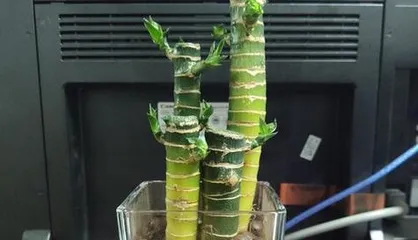Lucky Bamboo is a popular potted plant, favored by many for its auspicious and prosperous meaning. However, many people fail to grow it healthily because they don't know how to care for it properly. This article will introduce how to grow Lucky Bamboo in soil to make it more lush and prosperous.

I. Choose the right soil for Lucky Bamboo growth
Choose a soil mix with good aeration, such as a mixture of peat moss and perlite, to ensure the health of the Lucky Bamboo's roots. Peat moss has strong water retention, while perlite provides good aeration. The combination helps control moisture and prevent waterlogging.
II. Water properly to keep the soil moist
Lucky Bamboo prefers a moist environment, but do not overwater to avoid waterlogging. Water moderately by keeping the soil moist, using small amounts of water frequently to prevent the soil from being too wet or too dry.

III. Fertilize in moderation
Lucky Bamboo does not require excessive fertilizer; a moderate amount of organic fertilizer can help it grow healthier. Fertilizing is not recommended in summer and winter; you can apply fertilizer once a month in spring and autumn.
IV. Control light and temperature
Lucky Bamboo likes a warm, humid environment, but too much direct sunlight can scorch its leaves. It is recommended to place it in a semi-shaded area. The indoor temperature should not be too high or too low, maintaining it between 15-25°C is ideal.
V. Prune withered and yellow leaves promptly
During its growth, Lucky Bamboo may develop some withered and yellow leaves. Pruning these leaves in time ensures the plant's aesthetics and prevents the occurrence of pests and diseases.

VI. Regularly untangle the roots
The roots of Lucky Bamboo can easily become tangled. Regularly untangling the roots can prevent death caused by root binding.
VII. Pay attention to indoor air circulation
Cultivating Lucky Bamboo indoors for a long time can produce a certain amount of carbon dioxide. It is recommended to open the windows daily to ventilate and keep the indoor air fresh.
VIII. Keep the potting soil loose
Loose potting soil helps the roots breathe and also helps retain moisture. Regularly repotting or replacing the peat moss can keep the soil loose.
IX. Prevent the occurrence of pests and diseases
Lucky Bamboo is susceptible to aphids and mites. Regularly spraying insecticides can prevent the occurrence of pests and diseases.
X. Avoid strong winds
Strong winds can cause Lucky Bamboo to topple over. It is recommended to place it in a windless location.
XI. Pay attention to adjusting humidity
In summer, the air is humid; you can increase indoor humidity by using a humidifier. In winter, the air is dry; you can place the Lucky Bamboo in a slightly damp location.
XII. Maintain appropriate distance between stems
Lucky Bamboo grows quickly; there should be an appropriate distance between the stems to facilitate light and air circulation.
XIII. Measure the soil pH
Lucky Bamboo prefers neutral or slightly acidic soil. Measuring the soil pH can help control its acidity and alkalinity.
XIV. Repot regularly
Repot Lucky Bamboo 1-2 times a year to replace the soil and pot, which helps it grow better.
XV. The special features of Lucky Bamboo
Lucky Bamboo not only has the symbolic meaning of wealth and nobility but also has multiple functions such as purifying the air and increasing oxygen, making it a highly valuable plant.
Through proper soil cultivation methods, Lucky Bamboo can become more lush and prosperous. As long as you pay attention to moderate watering, fertilizing, controlling light and temperature, and pruning, they can grow healthily.